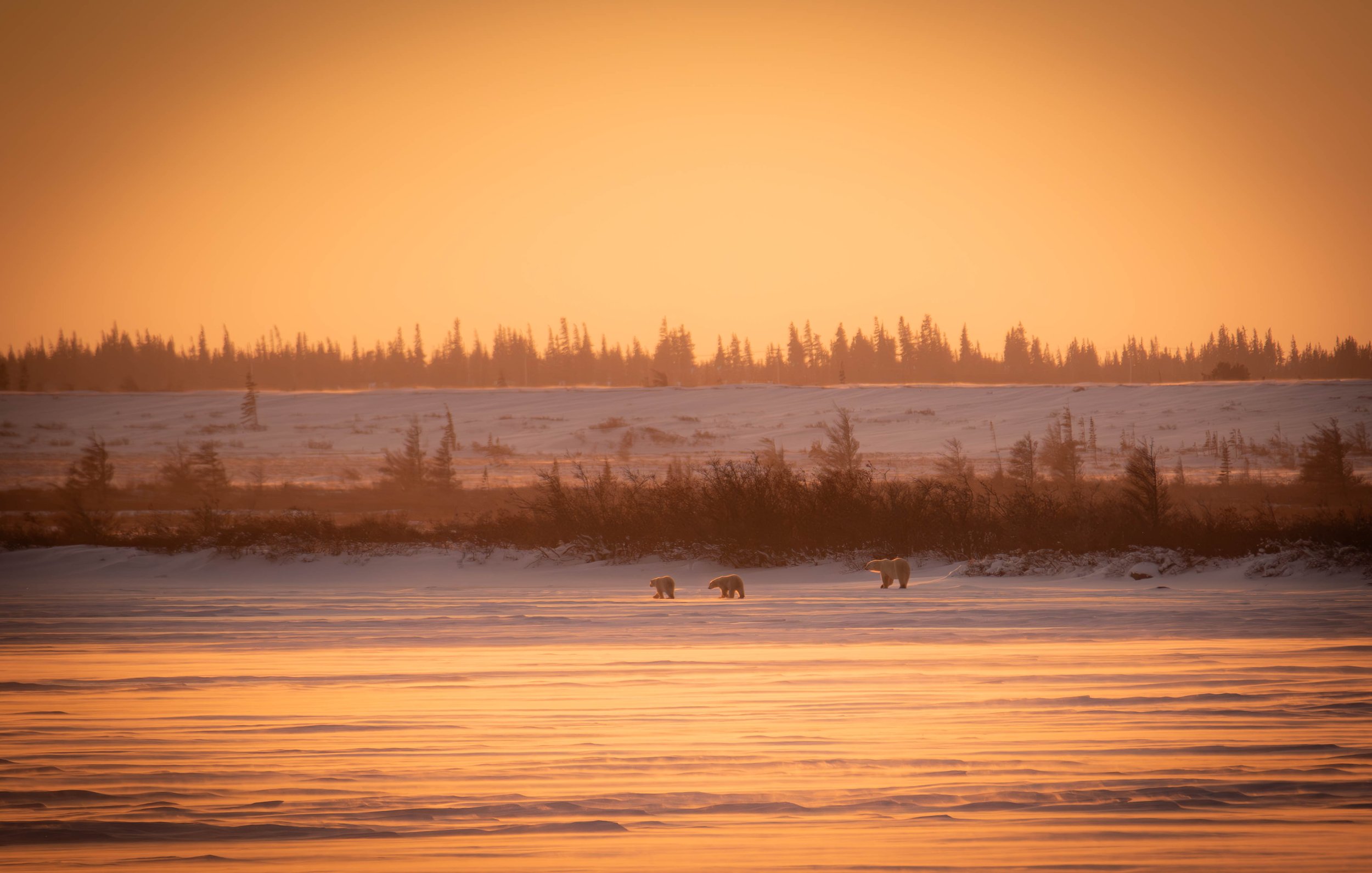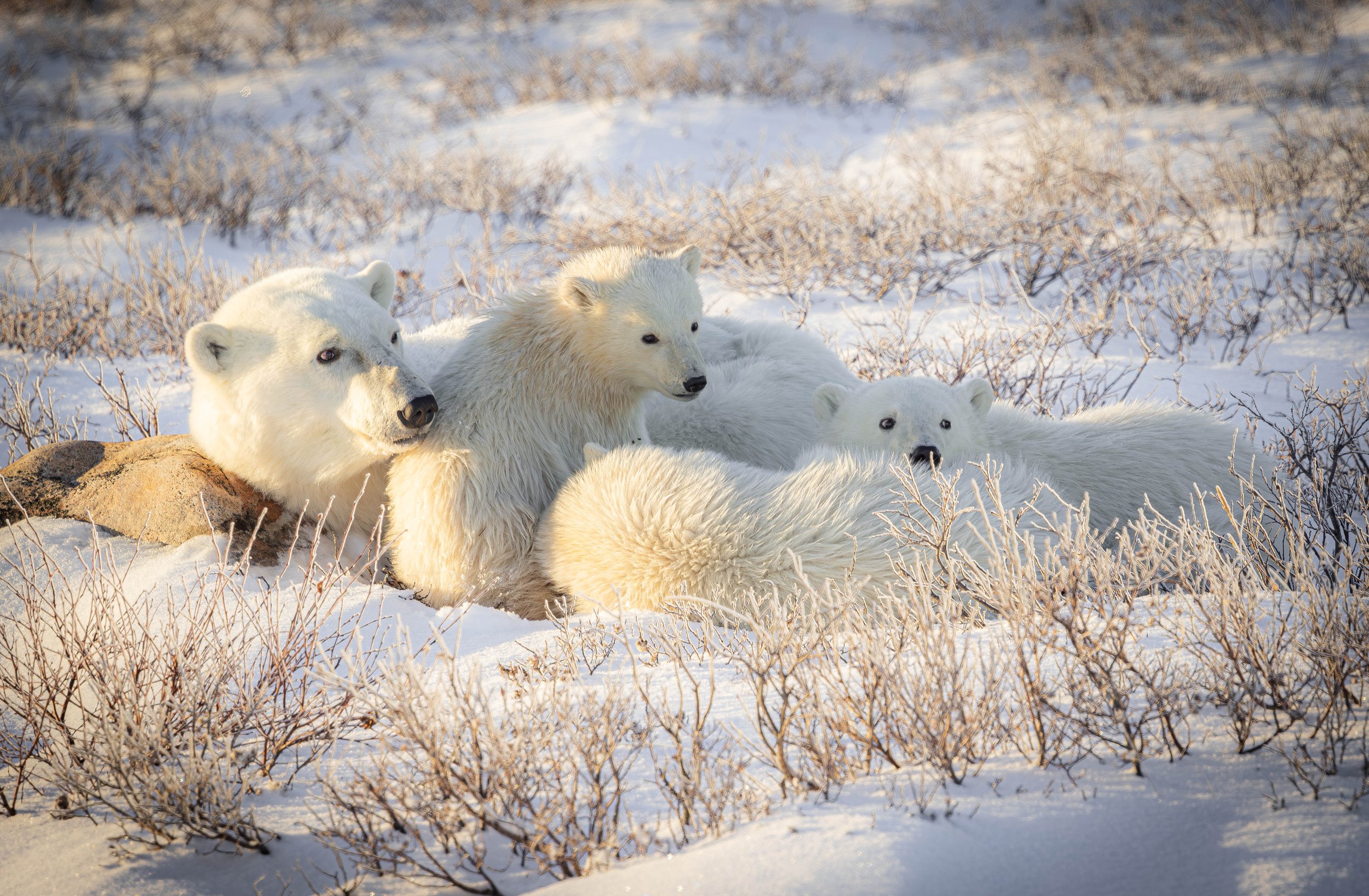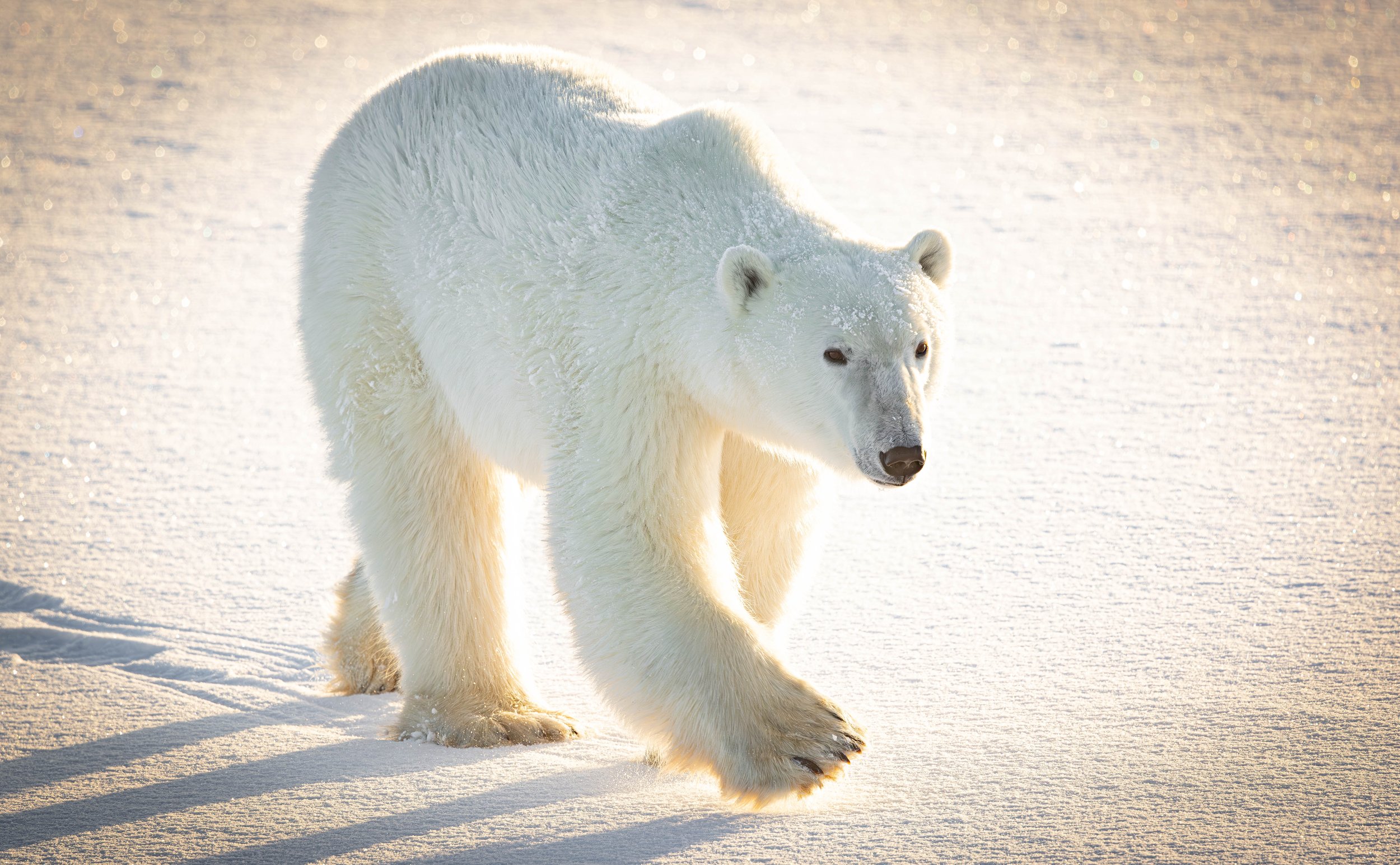
Polar Bear Capital of the World
Every year, polar bears from the Western Hudson Bay population migrate to Churchill, otherwise known as the “polar bear capital of the world”. In autumn, this frontier town witnesses the first sea ice formation of the region, attracting the bears to gradually return as temperatures drop. The bears eagerly await their opportunity to return to the ice and resume their hunting practices, where they hope to acquire large supplies of their main food source, the ringed seal. This delicate relationship between predator and prey, along with other wildlife, is supported by the fragile coastal and tundra ecosystems surrounding the town of Churchill. For this reason, the Churchill Wildlife Management Area and Wapusk National Park protect significant tracts of land. Wapusk National Park is also recognized as one of the world’s largest known maternity denning areas where pregnant female bears remain on land and endure a gruelling 8-month fasting period to birth cubs. Understandably, polar bears have many obstacles to overcome and these challenges are growing. Climate change has negatively impacted sea ice formation, reducing the amount of time polar bears spend hunting on the bay. Over the past 40 years, sea ice availability has declined by an average of 25 days, resulting in suboptimal hunting time, and, in turn, decreased body condition as well as a reduction in reproductive success. Habitat protection and climate change mitigation are therefore critical in ensuring the survival of the great white bear.
Guiding in the Polar Bear Capital of the World
I first visited Churchill in the summer of 2013, and though I quickly fell in love with the varied ecosystems of the tundra, boreal forest, and Hudson bay, it was ultimately the community and amazing conservation stories that brought me back as a naturalist a few years later. In my eyes, Churchill represents an incredible example of how tourism can have immensely positive impacts on the natural world. This was not always the case however, as conservation and education did not take centre stage when tourism first began in the region. Several decades later, Churchill has become a beacon for polar bear conservation and sustainable ecotourism. Funds and resources generated through tourism are injected into programs keeping bears and humans safe while allowing for an abundance of research. Between hands-on health checks, helicopter surveys, relocations, GPS tracking, and DNA studies, there is a plethora of data being gathered to help us protect polar bears in the wild. Though I come to Churchill several times a year, polar bear season will always hold a special place in my heart, as this is where my guiding career began. This path has allowed me to view polar bears through many lenses and my hope is to use photography to share the stories of climate change, the loss of sea-ice, and human-bear interactions, inspiring others to better our world through small daily changes.
Polar Bear Alert Program
Along the shores of Hudson Bay, is a one-of-a-kind program with a simple mission: keep humans and polar bears safe. The Polar Bear Alert Program is most active in autumn, when several hundred polar bears congregate near Churchill as they await the return of the sea-ice. When a bear makes it too close to town, it is deterred by trained Conservation Officers, being pushed back into the wild. Individuals who cannot be deterred or repeatedly make their way into town are captured and placed in the Polar Bear Holding Facility, nicknamed Polar Bear Jail. Prior to being transported to the facility, tissue and fur samples are collected, while the bears are measured, weighed, and tagged, before loading this information into a database. Typically, bears that end up in jail are those that recently left their mother’s side and are still developing the skills they need to hunt and be successful in life. These inexperienced bears are more likely to take risks around humans, hoping to obtain food resources as they await prime hunting season. Once in the jail, the bears reside in a safe place where they can rest and stay out of trouble until they are released back into the wild either by helicopter or by land when the ice has returned. Between the abundance of bears and people, disaster could easily fall upon this remote town, but this unique program has ensured the safety of all living creatures. Wayward bears finding themselves in town are now managed in a way that avoids fatalities, ensuring a path to survival in hopes of growing the population. Churchill residents are incredibly proud of their polar bears and are fiercely dedicated to preserving this iconic species through innovative techniques like the Polar Bear Alert Program.









































